Travel to Eat: Happy Dining in Europe
Artsy Traveler contains affiliate links for products and services I personally use and can happily recommend. As an Amazon Associate, I earn from qualifying purchases. Please read the Disclosure for more information. If you make a purchase through these links, at no additional cost to you, Artsy Traveler earns a small commission. Thank you!
Make some of your travel adventures gastronomic ones. In Europe, you can definitely eat well, even on a budget, if you follow some simple guidelines.
The key to eating well in Europe is to eat like a local person. Dine in small eateries, shop in the markets, cook when you can, eat picnics, and slow down.
Eating is an art form in many parts of Europe. Yes, you’ll find lots of fast food and mediocre, microwaved dinner specials. But you’ll also experience memorable meals that you’ll talk about for years.
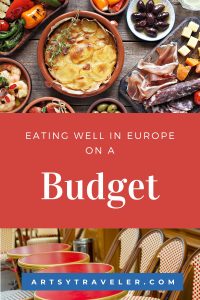
My family still reminisces about many of the meals we’ve enjoyed in Europe over the past four decades–the Gorgonzola gnocchi in 1999, my birthday dinner in Paris in 2012, the Indian meal in Berlin in 2015, the Indonesian meal in Amsterdam in 2023, so many meals in Italy… The list goes on and on, and none will be forgotten!
What can I say? I love good food! Here’s how to eat well on a budget in Europe so you’ll have money left over for the occasional big meal out.
Don’t Pay Extra for Hotel Breakfasts
If you want to eat well on a budget in Europe, forget hotel breakfasts. I’m amazed at how expensive breakfasts have become—often €20 each or more on top of the room rate. Sure, most of these breakfasts are fabulous buffets with tons of choices, but €20, even €30? No thanks!
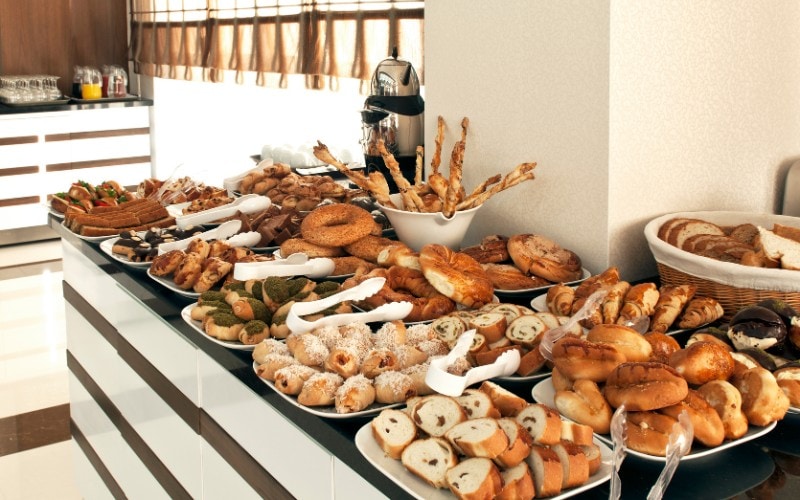
Some hotels charge a lower rate for a continental breakfast of a few croissants and coffee, but even these can be overpriced. I eat the hotel breakfast only if it’s included in the room rate or if we’ve arrived very late and haven’t had time to get to a grocery store.
Here’s what I suggest you do to avoid paying for overpriced hotel breakfasts:
At the start of your trip, buy a couple of plastic bowls and a few pieces of real cutlery, or bring them from home. Carry them, along with your food, in an insulated, collapsible bag. I tell ya, that handy bag has been a godsend on trip after trip.
Every few days, buy individual cartons of yogurt, a small bottle of milk, a box of granola, and a few pieces of fruit from the local grocery store.
After enjoying a light breakfast in your hotel room, head out to enjoy coffee and maybe a croissant or two at a local bar. If the weather’s fine, sit outside at a sun-drenched café and get your caffeine jolt from a fresh cup of coffee that’s usually much, much better than the machine-made coffees services at most breakfast buffets. In fact, even in super posh hotels, I’ve never had a really good coffee at a breakfast buffet.
When you enjoy your coffee at a local cafe, you’ll not only save money, you’ll also get to watch locals, instead of fellow tourists, greet the new day.
Put Together Picnic Lunches
A great way to eat well on a budget is to eat picnic lunches. Fill your insulated bag with plenty of cheeses, spreads, fruits, and vegetables from local markets. Visiting markets is always fun, and even more so when you’re hungry. Buy fruits that are fresh and in season, sample local cheeses, and get a few hundred grams of charcuterie made at the farm down the road.
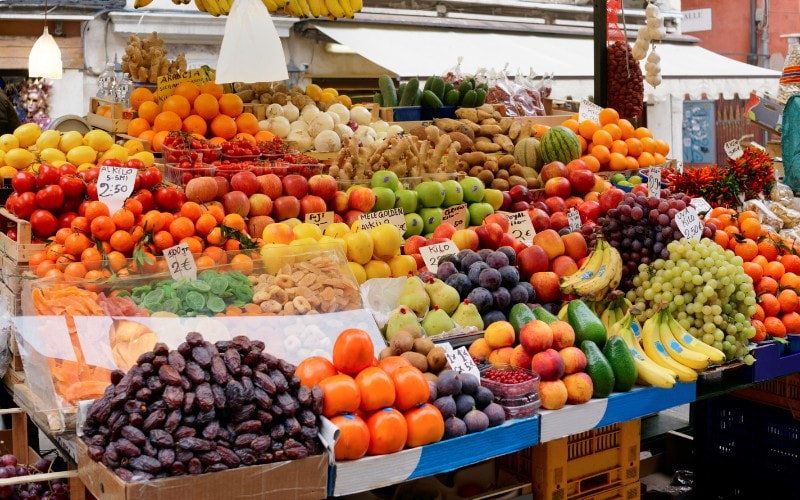
Drop into a bakery and pick up a baguette or a few fresh buns. You may also find bakeries that sell pre-made sandwiches. Surprisingly, the best ones I’ve found on my travels have been in England. And while you’re in the bakery, pick up one or two pastries or sweet treats. They are usually to die for! Fresh-made baklava in Greece? A raspberry tart from a French patisserie? Yes, please!
If you’re driving, enjoy your picnic lunch at the tables found at every rest stop along your route. If you’re traveling by train, find the seats in blocks of four that include a table or a single seat with a pull-down tray on the back of the seat in front of you. Fortunately, train trays are generally roomier than those of their airline sisters.
Why not munch your picnic lunch while relaxing on a park bench or sitting next to a fountain? All European cities feature great parks that are perfect for resting your weary sightseeing bones and inhaling some good, fresh oxygen.
Cook Some Meals at “Home”
If you’re staying in apartments or holiday homes, you’ll be better able to stick to your budget when you eat some of your meals at home. For sure you’ll eat breakfast at home, and then you can pack a picnic lunch to take along on your sightseeing forays.
For dinner, pick up local food at the markets and enjoy the challenge of cooking in a new kitchen. When we home-base, I make a lot of omelets, pasta dishes, and salads that are easy to whip up with local ingredients.

In many markets and supermarkets, you can buy the components of a fully cooked meal so you all you need to do when you get to your place is set the table.
Enjoying this post? Subscribe to Artsy Traveler to Receive Valuable Travel Tips and Your FREE Guide: 25 Must-Do Artsy Traveler Experiences in Europe for 2025
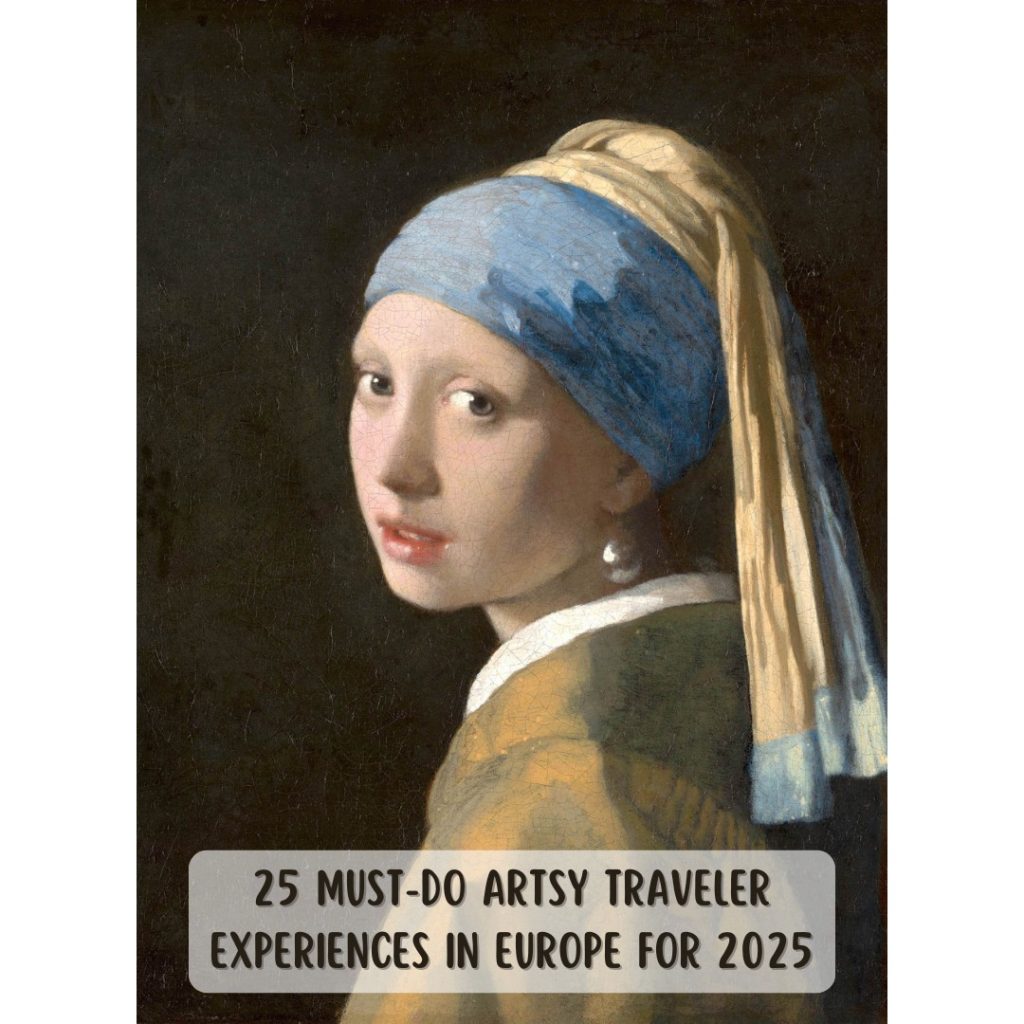
Take care with unfamiliar appliances and cooking methods. For a sobering tale of a cooking disaster in a holiday rental, check out Siena Explosion, one of the stories included in Pastel & Pen: Travels in Europe that combines my writing with husband Gregg Simpson’s art.
But you definitely don’t want to cook all your meals at home. After all, you’ve come to Europe to explore new places and new cuisines. Consider cooking “in” two or three times during a week’s stay. You’ll save money, and by shopping local, you’ll find new ways to enjoy European food.
And on the other three or four days? Explore local restaurants and add to your list of memorable culinary experiences.
Eat Where the Locals Do
Locals who eat out generally avoid tourist traps–and you should too. If a restaurant is full of tour groups, keep on walking. Also, if the restaurant is located in an iconic location such as overlooking the Eiffel Tower, on the Piazza Navona in Rome, or at Nyhavn in Copenhagen, keep walking.
We’ve made the mistake of eating at “high rent” restaurants in touristy areas and then regretting it. You’ll find ho-hum and very over-priced food, rushed service and often a verbal request for a tip at the end of your meal. Also, every table will be filled with other tourists.
Yeah, you’re a tourist too, but it’s more fun to be surrounded by locals, even if you sometimes can’t understand what they’re saying (even, sometimes, in English-speaking places sucy as England and Scotland). When I was in Birmingham, I sat next to a couple enjoying their dinner and my eavesdropping efforts were poorly repaid. I couldn’t understand one word in ten of the Brummie accent!
Get Recommendations from Hotels
To eat well on a budget in Europe, ask your hotel to direct you to local places where the prices are generally reasonable and the food is hearty and authentic. We’ve always had good success when we ask for recommendations.
Hotel managers know their neighborhoods and sometimes have relatives who run local restaurants. It’s in their interest to direct you to good places that you’ll rave about when you’re writing a review of their hotel.
Go Off the Beaten Path
Explore the back streets. During a two-week stay in Rome in October 2022, we found a small restaurant on a quiet street a few blocks from our place in an area not far from the Coliseum. The restaurant was family-owned and packed with locals. It had a small menu and nightly specials. Prices were good, the food was wonderful, and the ambiance nigh on perfect.
We loved it so much, we returned three times. By the third time, we were welcomed in like old friends.
Make Use of Rating Apps
Use review apps on your phone to check reviews before you venture into a place. This advice is given for a reason!
I ignored it during a sudden downpour in Rome when we had to duck into the first restaurant we came to on the Piazza del Popolo. Read about what happened in Bella Roma Rip-off, also included in Pastel & Pen: Travels in Europe.
Thanks to my Piazza del Popolo experience, I always check my phone for places to eat, and I read the ratings. As a result, my success rate for finding good meals has skyrocketed.
You have to eat, so you may as well make sure your hard-earned money pays for meals as tasty and memorable as possible.
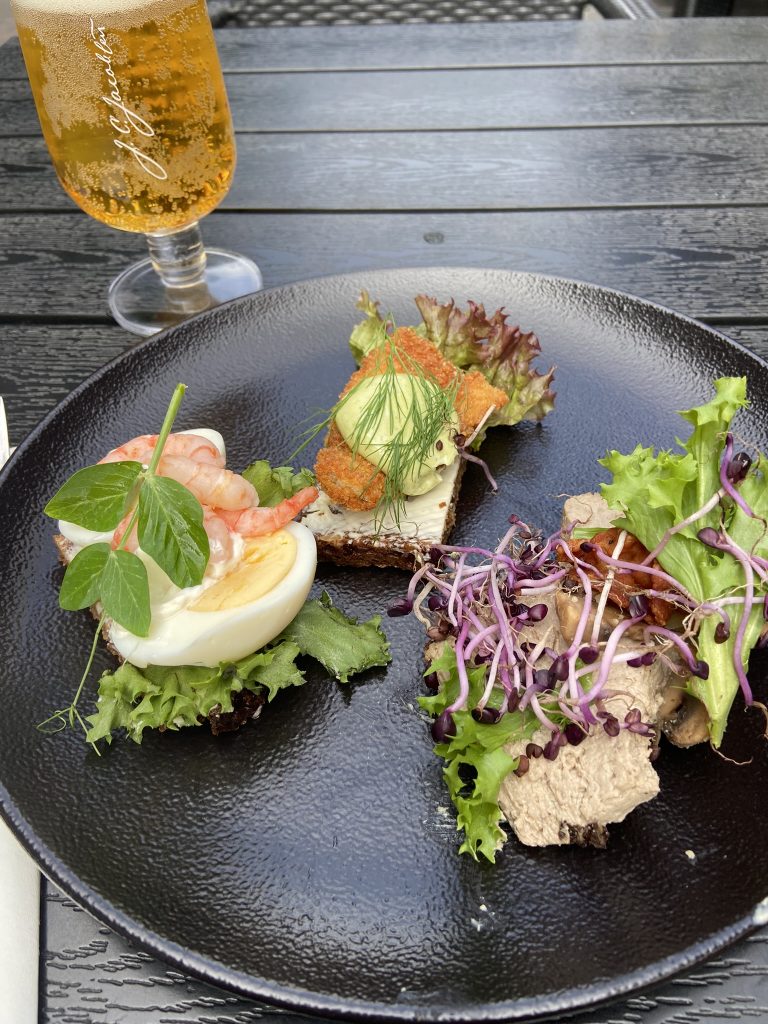
Use QR Codes
More and more, restaurants in Europe are putting their English menus online so you can access them via QR codes either stamped on the tables or printed on the main menu. Make sure your phone can read QR codes (usually the Photo app works) and have a quick check of the English menu before you order.

Back in the day, menus printed in six languages were a red flag that the restaurant was oriented only for tourists and that the food was likely to be sub-par. Fortunately, a multi-lingual menu isn’t necessarily a turn-off any longer, particularly if it’s discreetly provided via QR code.
And thank goodness!
Years ago, before QR codes and Smart Phones, I made the mistake of ordering a dish in France that I thought was beef. Yes, it was beef – beef kidneys. And they were not tenderly-cooked-in-a-scrumptious-cream-sauce beef kidneys, but kidneys swimming in a thin, gray gravy with bits of what might once have been vegetables. I managed one bite.
Since then, I always check the English of any unfamiliar words. If the restaurant doesn’t offer an English translation, get a translation app on your phone.
Enjoy Splurge Meals
One of the reasons why I forego hotel breakfasts, eat picnic lunches, and dine at “home,” while traveling is so I can build room in our food budget for splurge meals.
For us, a splurge is between €90 and 110 for three courses plus wine. This amount won’t get you in the door of the top restaurants, but it’s usually enough for a darned memorable meal in great surroundings. Most of the time, even on our most recent trips to Europe post-pandemic, we were able to dine well for about €80. Only a handful of times did we spend €100, and each time we enjoyed tasty food and excellent service.
And yes, there were times over the years when we’ve spent €80 for mediocre food (thankfully, never €100), but that’s easy to do on any day at home, so we can’t complain.
Make Reservations for Splurge Meals
Find highly-rated places on your phone or tablet and then call to make a reservation. In my experience, the person who answers the phone generally knows enough English to get your drift.
Prepare by learning how to say the number in your party and the time in the local language. For example, if you’re in France and don’t speak much French, you could say “Réservation. Ce Soir. Deux personnes. Huit heures to reserve dinner for two that evening for two people.
Throw in a ‘s’il vous plaît’ and a few ‘mercis’ and they’ll get it. And thankfully, more and more restaurants have online reservation services, which makes reservation booking a uni-lingual cinch. Check the restaurant’s website to find out if they accept reservations online.
Eat at Fancy Places for Lunch instead of Dinner
If you want to sample the cuisine at a highly rated, Michelin-starred restaurant, consider making lunch your main meal of the day. Often, the same meal served in the evening costs much more. Of course, you’ll be too stuffed for sightseeing for the rest of the day, but so what? You’re on vacation! Find a sunny spot to bask while you digest your fine meal.
Explore New Cuisines
Yes, hamburgers are readily available in Europe, as is Starbucks coffee, Pizza Hut, and KFC. But why not try something new?
Seek out local restaurants that serve food typical of the region. One of our best gastronomic experiences in Europe was the evening we spent cruising the pinchos (pintxos in Basque) bars in San Sebastian, Spain.
OMG! In every bar, we picked out one or two pintxos, washed them down with a cheap (but really good) glass of wine, and then moved on to the next place. Here’s what a selection of pintxos looks like in a San Sebastian bar.
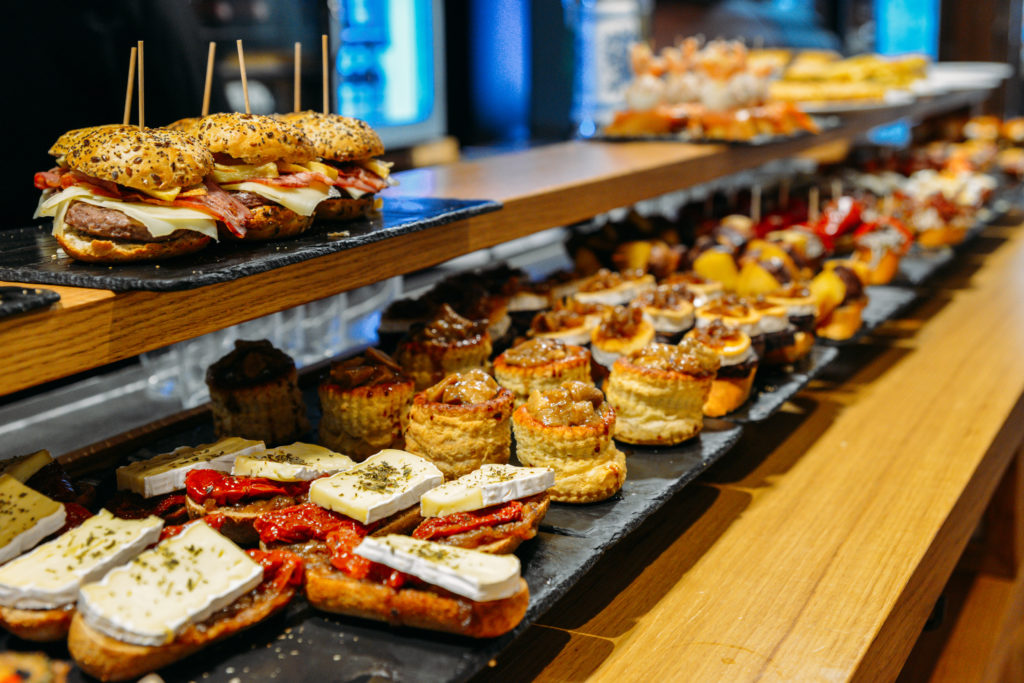
You don’t need to eat the fermented shark in Iceland to enjoy local cuisine. Ask the server what’s typical of the region. They’re usually pleased to tell you and to make recommendations.
And at the end of the meal, order a shot of the local liqueur. Every European region has its specialties, from limon-cello in Italy to port in Portugal. Heaven!

Explore World Cuisines
These days, every major cities and most towns have plenty of restaurants run by people from all over the world. You’ll find Indian curries in Berlin, Thai food in Rome, and sushi in Paris (and pretty much everywhere else!).
Sometimes, we enjoy a break from local cuisines (e.g., pasta every night in Italy) and branch out to sample other cuisines. One of my more memorable meals on a recent trip to England was a curry at a Himalayan restaurant in York.
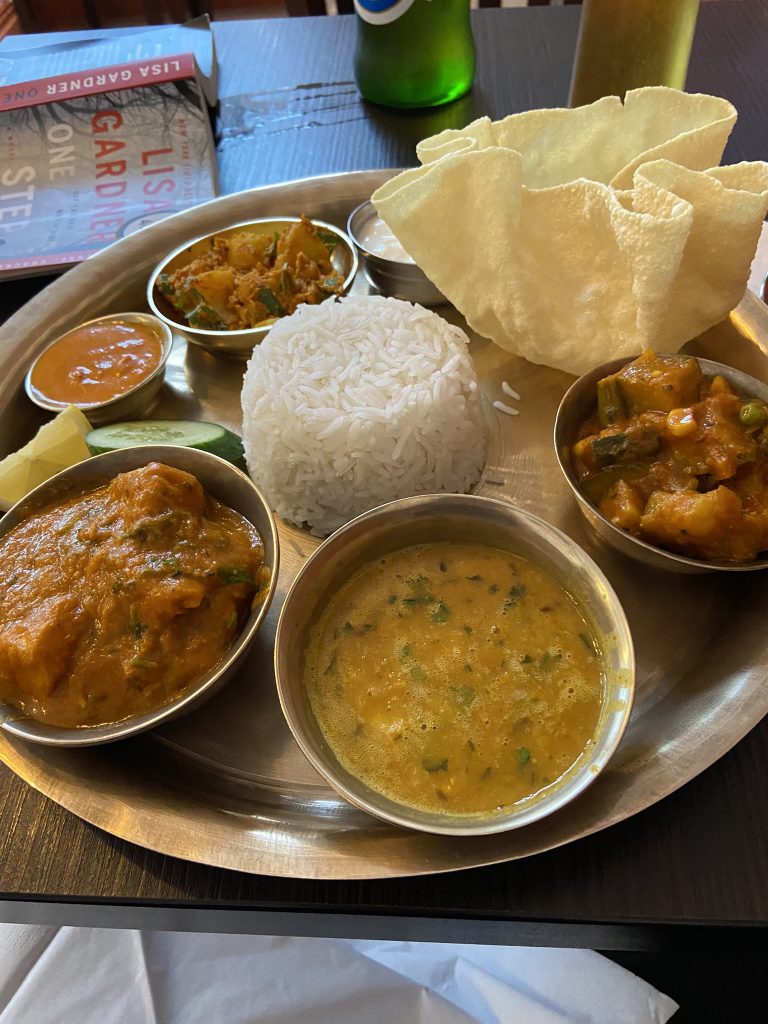
So, What’s a Good Budget?
There was a time in my life when I ate cans of baked beans in youth hostels to save money. Those days are long, long past. Now, I budget about $100 a day for the two of us for food. Some days we go over if we’re eating out for both lunch and dinner, and other days we spend much less because we buy groceries and eat in.
But $100 a day is a reasonable budget that should allow you to have one good splurge meal a week and three or four regular meals plus a few lunches.
You may need to up your budget a bit if you also like to have a few cups of coffee during the day (plus local pastries of course) and some wine with dinner. We spend less when we don’t order alcohol with our dinners but, to be honest, that rarely happens in Europe!
Relax and Enjoy!
Europeans live to eat rather than eat to live. They enjoy good food and long conversations. We’ve had many dinners out with Europeans and have been amazed at how many courses and drinks they’re able to consume, and also, how much they love to sit and chat for hours.
What’s the rush?
And should you take a picture when your beautifully prepared and presented food arrives? Absolutement!

Do you have tips about eating well and memorably in Europe? Please share them in the Comments box below. I love hearing about other travelers’ experiences—good and not-so-good!
Another way to enjoy food while traveling in Europe is to treat yourself to a cook class. Here are some posts about cooking classes I’ve taken in Paris, Rome, and Nafplio in Greece:
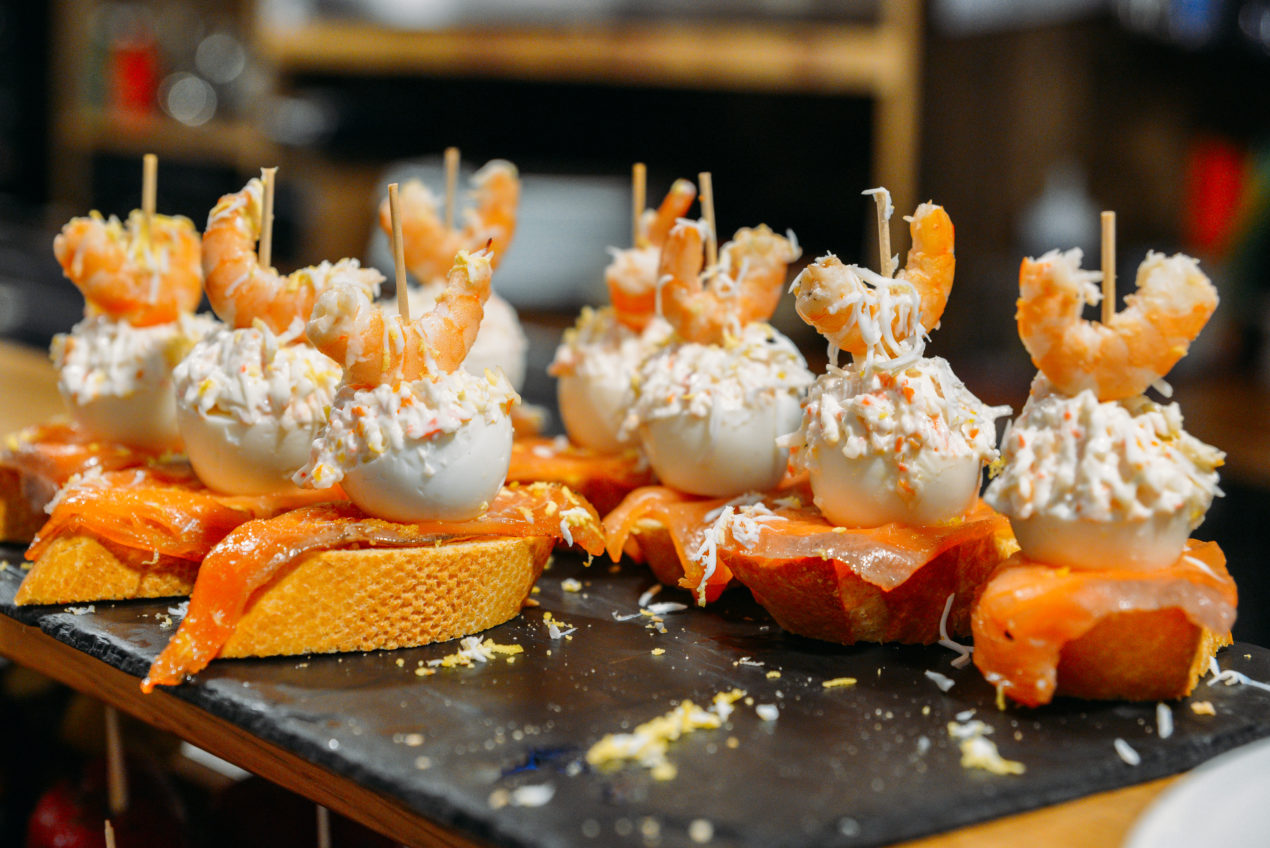
[…] Dine Well on a Budget […]
[…] Dine Well on a Budget […]